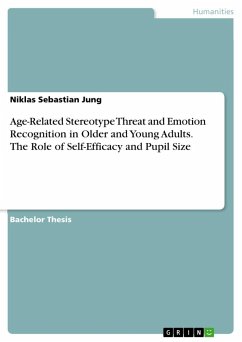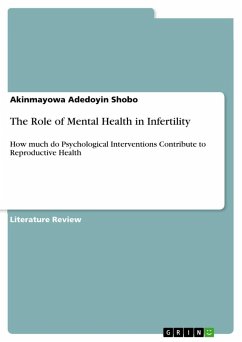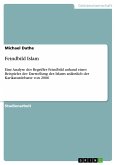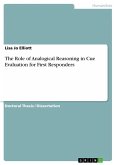Bachelor Thesis from the year 2023 in the subject Psychology - Miscellaneous, grade: 1 (sehr gut), University of Innsbruck, language: English, abstract: As individuals are living longer, understanding the factors that impact their everyday lives, health and well-being has become a critical area of research. The purpose of this research study is to assess the impact of an explicit negative stereotype on performance in an emotion recognition task. Specifically, the study aims to investigate in greater detail how self-efficacy influences the relationship between stereotype threat and performance. This will be investigated between age groups (young vs. older adults) and experimental condition (presence vs. absence of stereotype threat). This relationship will be examined on three dimensions; the accuracy (decision-making) and reaction-time (processing speed) in the emotion recognition test and the pupil dilation (physiological changes) during the task. We conducted an double-blind eye-tracking experiement with n = 90 participants and computed multiple two-way ANOVA's to test the hypothesis regarding the differences among the four groups (young/prime, young/non-prime, old/prime, old/non-prime) . Our findings indicate that the presence of the stereotype threat did not yield any significant effects on these dimensions in young and old adults. However, it is noteworthy that significant differences were observed between young and old adults on all three dimensions. Young adults exhibited superior performance in the RMET, displaying higher accuracy and shorter reaction times compared to the older adults. Additionally, young adults exhibited increased pupil dilation during the task compared to the older adults, indicating a potentially higher level of cognitive engagement or arousal. The study indicates that despite the age-related declines in brain functionality among older adults, they exhibit notable resilience against specific stereotypes, thereby portraying a sense of empowerment and competence contrasting the prevalent societal notion of aging individuals becoming progressively weaker and more vulnerable over time. There remains a pressing need for further exploration to unravel the complexity of its underlying mechanisms and the factors that mediate its effects across different domains.
Hinweis: Dieser Artikel kann nur an eine deutsche Lieferadresse ausgeliefert werden.
Hinweis: Dieser Artikel kann nur an eine deutsche Lieferadresse ausgeliefert werden.








